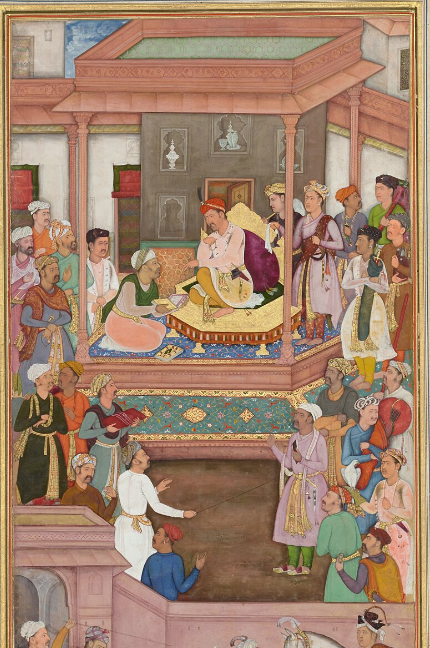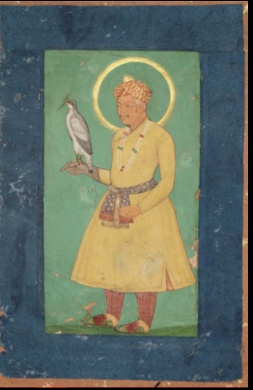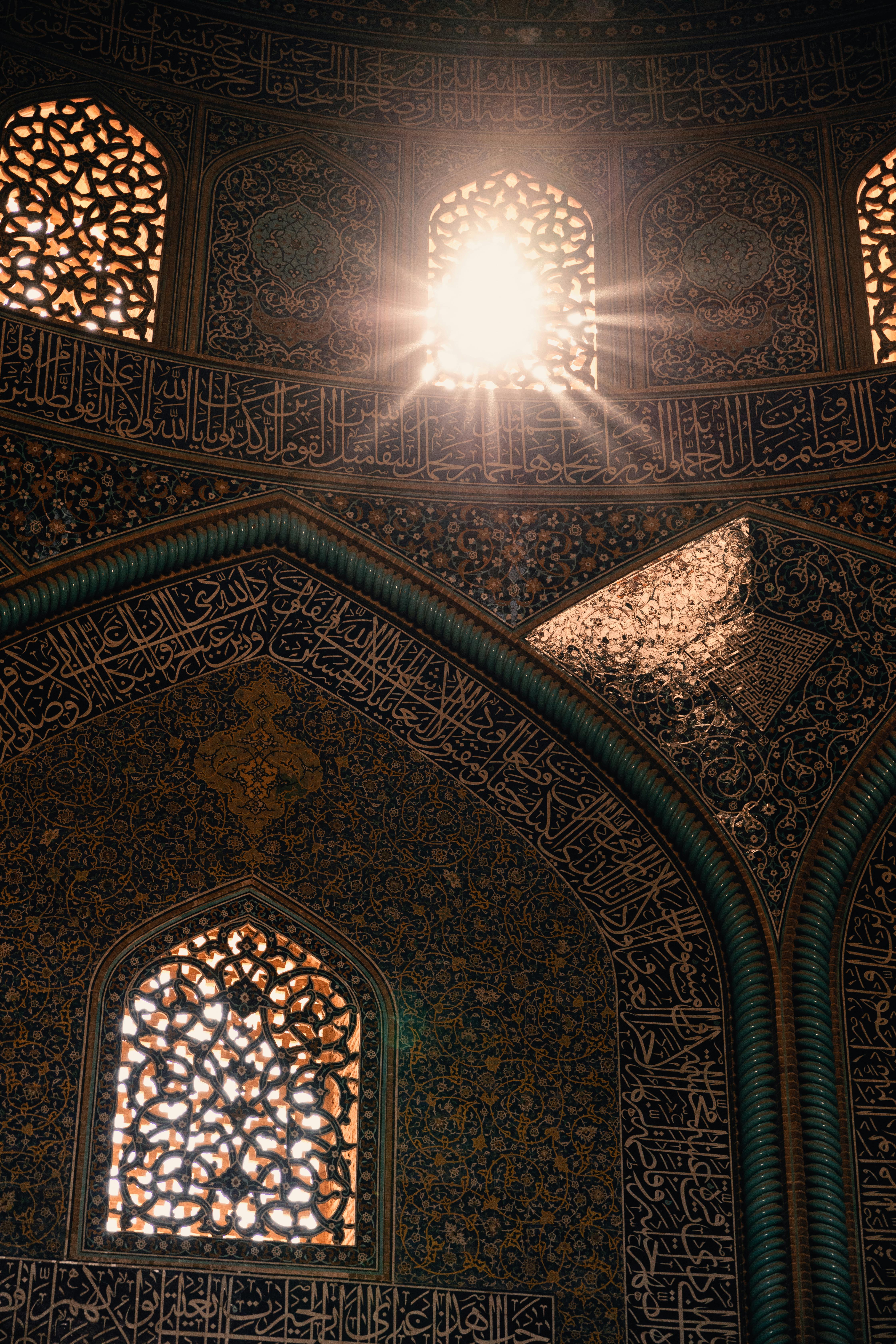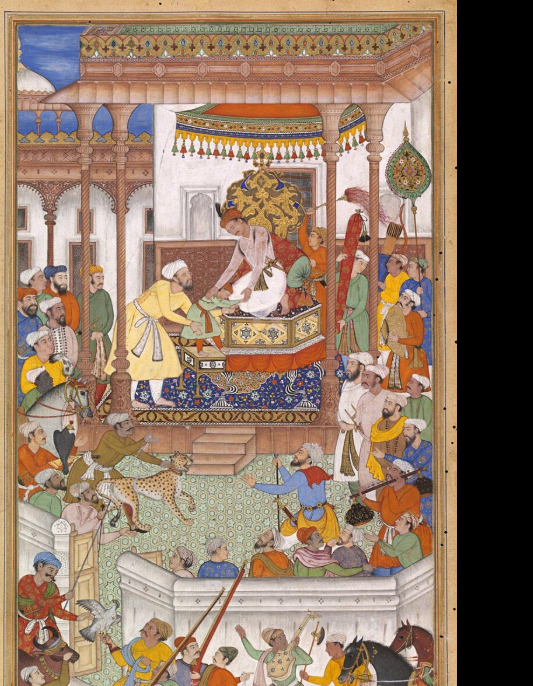Physical Address
304 North Cardinal St.
Dorchester Center, MA 02124
Physical Address
304 North Cardinal St.
Dorchester Center, MA 02124

Introduction
If you tried to recollect the achievements of the great emperors of the past, you would most likely think of great conquests, administrative reforms and groundbreaking legal codes. Rarely however, is an emperor remembered for his inquisitive nature towards spiritual matters. The exception to this rule is a certain little inconsequential figure, you may or may not have heard of. That’s right. His name is Jalal-ud-din Muhammad Akbar. Akbar is known in history school textbooks as quite the religiously tolerant figure. He is known to have cut taxes that were imposed on non muslims, and promoted the practices of religions besides Islam. What you may not know perhaps, is the fact that generosity isn’t merely the result of kindheartedness. It was also a product of Akbar’s fascination with spiritual and philosophical inquiry. Exploring different religions served as a means for Akbar to explore his various intellectual fascinations. Eventually the emperor attempted to form his own religion. This, of course, is the topic of our discussion. The one and only Din-i-Ilahi.

Din-I-Ilahi
Din-I-Ilahi was the consequence of the time and place that it finds itself in. It is accurately understood as a combination of different faiths that existed in the Indian subcontinent at the time of Akbar’s reign. Akbar’s interest in a wide range of religious discourses resulted in a fascinating blend of the various religious movements that influenced sixteenth century India.
Worship of the Sun
The sun was venerated as a symbol of the creator, and Akbar established the solar year that began at the vernal equinox.An example was set of adoring him, the timeless in the flame that measures time.
Making the sun, and fire the object worship was a practice that can be attributed to the influence of Zoroastrianism. The influence of Hinduism can be seen as a practice, was made of reciting the 1000 Sanskrit names of the sun.
Parallels can be drawn to the cult of Aten that existed in ancient Egypt and ascribed a similar position to the symbol of the sun.

Fig. Worship of the sun was central in Din-I-Ilahi.
Salvation
The Din-I-Ilahi was the product of much discussion and debate in the court of Akbar.After long hours of discussion, it was agreed upon that salvation was the product of knowledge of the truth, and by following the precepts of reason or “The Great Namus”. Renunciation of the world, abstinence from sex, and avoiding adultery were all seen as dependent on following the ten Virtues.
Ten Virtues
The Din-I-Ilahi lists ten virtues that serve as the highest ethical guidelines to its followers. These are,
(1) Liberality and beneficence
(2) Forgiveness of the evil doer and repulsion of anger with mildness
(3) Abstinence from worldly desires
(4) Care of freedom from the bonds of the worldly existence and violence, as well as accumulating precious stores for the future real and perpetual world
(5) Wisdom and devotion in the frequent meditation on the consequences of actions
(6) Strength of dexterous prudence in the desire of marvelous actions
(7) Soft voice, gentle words, pleasing speeches for everybody
(8) Good treatment with brethren, so that their wellbeing has precedence to our own
(9) A perfect alienation from creatures and the material world, and a perfect attachment to the supreme being
(10) Dedication of soul to the love of God and, very close a union with God, the preserver of all, as long as the soul may think itself with the Merciful One until the time of separation from its worldly body
These virtues clearly emphasize general kindness towards others and a sort of renunciation from the world, in favour of a stronger relationship with god. Here one can see the interplay and interaction of various faiths. The “love thy neighbor” aspect of abrahamic religions is complemented by ideas of renunciation of the world, in favour of religious matters. One can speculate the influence of Buddhist schools of thought, as the interest in spiritual affairs seems to take precedence over worldly ones.

Fig. The Din-I-Ilahi emphasized a connection with the divine.
Practices of the Din-I-Ilahi.
The Din-I-Ilahi like any religious movement had a wide and varied set of beliefs and practices that portray an interesting mixture of the various religious traditions of the time. We can see various beliefs come together and be reflected in the practices of the Din-I- Ilahi. For instance, The Din-I-Ilahi forbade eating meat in respect of hindu traditions. This rule went so far as to prevent benefitting from poachers,bird catchers and butchers at all. A common custom of Ilahians was the practice of greeting each other with phrases such as “Allahu Akbar’’ and ‘Jallale Jalaluhu”.These were intended to show the impact of divinity in matters of everyday affairs and express it through everyday conversation.Another practice required of the Illahians was to prepare a dinner at least once in their lifetime.This was in contrast to the common hindu and muslim traditions where such a meal was prepared upon one’s death.
Lack of priesthood
Uniquely in the Din I Ilahi, there was a distinct lack of priesthood. Akbar set up no formal system to propagate his faith. There was no hierarchy and no one held power to act formally as an authority on matters of the faith. It was seen more as a spiritual practice and lacked much of the inclinations of an organised religion.
Akbar’s interaction with Hinduism
We must realise that the Din-I-Ilahi didn’t merely emerge from nowhere.It was the product of speculation that involved that interplay between many faiths. We must acknowledge t he role of an emperor who was heavily influenced by, and interested in theology. This is to the extent that we see commentary on many Hindu ideas in the court of Akbar.
There was an effort made by Akbar to have hindu texts such as the Ramayana,Mahabharata, Harivamsa, and the Yoga Vasishta translated into persian. He was particularly fascinated by the lack of a Hindu equivalent to judgement day, sending souls to either heaven or hell. When he suspected that the concept of Judgement Day was being brought into the Mahabharata, he censured the translator.One can also find a chapter on the doctrine of Vedanta in the account of Abul Fazl, one of the courtiers of Akbar. A unique interest in theology combined with a policy for religious tolerance seems to have made the emergence of Din-I-Ilahi simply inevitable.

What is the Din I Ilahi?
Much of our speculation is driven towards ascertaining what exactly the Din-I-Ilahi was. Depending on your perspective, you could see it as a more liberal extension of the Sufi Islamic orientation that Akbar already had. If you fall at the other end of the camp, you might believe that it is in fact a completely separate religion, and that Akbar in fact left Islam.
The writer Badauni states,“According to Majesty, it was settled fact that the one thousand years since the time of the mission of the Prophet, which was to be the period of the continuance of the faith of Islam, were now completed, which he treated in his heart” . After persuading with this idea, it was not so difficult to Akbar to change and design ordinances of Islam. The outcome of his deliberations was the Din-i Ilahi in the beginning of 1582 .”
Many other such writings claim that Akbar left the islamic faith for his new religion. However, these accounts, including Badauni, must be taken with a grain of salt as they come from Akbar’s public enemies.
Conclusion
The Din-I-Ilahi remains as an unfortunate forgotten relic that sadly remains only as a part of history textbooks. It represents a unique blend of every faith practiced in India at the time. As such it represents the very idea of “India” in a way as India itself is a blend of many different cultures and traditions. However, looking into the past we see the Din-I-Ilahi for what it is, a captivating blend of Theology, Philosophy and Spirituality. Perhaps ideas such as these warrant more discussion than they currently inspire. Perhaps ideas of the past are worth looking at more closely to reveal a rich and vibrant tradition of abstract speculation.
Works Cited.
The Editors of Encyclopaedia Britannica. “Dīn-i Ilāhī”. Encyclopedia Britannica, 8 Apr. 2024, https://www.britannica.com/topic/Din-i-Ilahi. Accessed 9 March 2025.
A Critical Analysis of Akbar’s Religious Policy: Dini Ilahi, Journal of International Relations and Diplomacy 4: 6 (2016), pp. 407-418.
Moosvi, Shireen. “The Mughal Encounter with Vedanta: Recovering the Biography of ‘Jadrup.’” Social Scientist, vol. 30, no. 7/8, 2002, pp. 13–23. JSTOR, https://doi.org/10.2307/3518149. Accessed 9 Mar. 2025.
Jackson, A. V. Williams. History of India. Robarts – University of Toronto. London, Grolier society. p. 44.
Shastri, M.R. “ The Din I Ilahi or the religion of Akbar” , 1941.